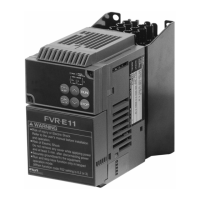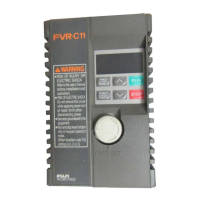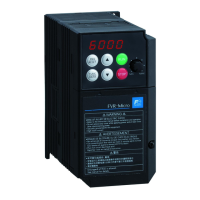1-6
1-4 Transportation
Always hold the main unit when carrying the inverter.
If covers or parts are held, the inverter may be broken or it may drop.
1-5 Storage
Store the inverter in an environment described in Table 1-5-1.
Table 1-5-1 Storage environment
Item Specifications
Ambient temperature
-10~+50 degree C
Storage temperature
(Note 1)
-25~+65 degree C
Relative humidity
5~95%
Note 2
Places not subjected to abrupt temperature changes
or condensation or freezing
Atmosphere
The product must not be exposed to dust, direct sunlight, corrosive or
fl
ammable gases, oil mist, vapor, water drops or vibration. There must be
little salt in the atmosphere.
86~106kPa (During storage)
Atmospheric pressure
70~106kPa (During transportation)
Note 1: The storage temperature is for a short time during transportation or the like.
Note 2: Even if the humidity is within the requirements of the specifications, places with abrupt
temperature changes are subject to condensation or freezing. Avoid storing the inverter in
such places.
(1) Do not place the inverter directly on the floor.
(2) If the ambient atmosphere is adverse, wrap the inverter in a vinyl sheet or the like when storing.
(3) If humidity may give an ill effect, add a drying agent (such as silica gel) in the package prepared
as described in item (2).
The long-term storage method of the inverter varies largely according to the environment of the
storage site. General storage methods are described below.
(1) The storage site must satisfy the requirements of specifications for temporary storage.
However, for storage exceeding three months, the upper limit of the ambient temperature shall
not exceed 30 °C. This is for the prevention of deterioration of electrolytic capacitors left turned
off.
(2) The package must be air tight so that moisture will not enter. Add a drying agent inside the
package to contain the relative humidity inside the package within 70%.
(3) The inverter installed on a unit or control panel and left is likely to be exposed to moisture and
dust. If this is the case, remove the inverter and move it to a preferable environment.
(4) Electrolytic capacitors left turned off for an extended period of time deteriorate. Do not store for
one year or more without turning the power on.
To store temporarily
To store for a long time

